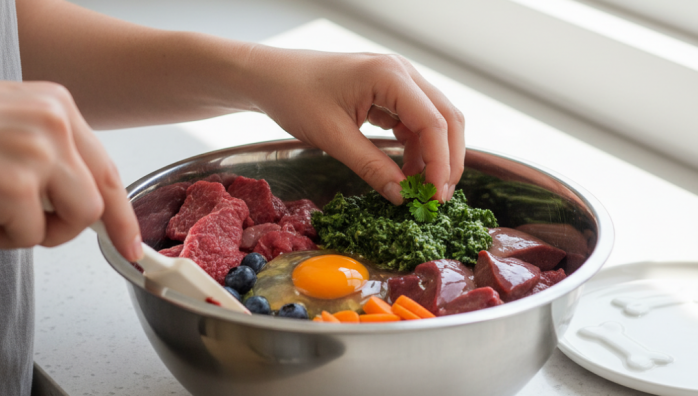Sourcing Ingredients for Raw Dog Meals
by admin in Pet Care Basics 18 - Last Update November 16, 2025

When I first decided to switch my dog to a raw diet, the biggest hurdle wasn\'t the concept—it was the logistics. I remember staring at my empty freezer, completely overwhelmed. Where on earth was I supposed to find all these different meats, organs, and bones without breaking the bank? It felt like a secret club I wasn\'t a part of. After years of trial and error, I\'ve found a rhythm and a network of sources that make raw feeding not just manageable, but genuinely affordable and enjoyable.
My starting point: building a relationship with a local butcher
Honestly, this was the game-changer for me. I walked into a local, family-owned butcher shop and just started asking questions. At first, I felt a bit awkward asking for things like chicken feet or beef liver, but I quickly learned they were happy to help. Butchers often have access to cuts and offal that aren\'t popular for human consumption and are willing to sell them at a great price. These are often called \'pet grinds\' or \'off-cuts\'.
What I ask my butcher for
- Organ Meats: Liver, kidney, and spleen are nutritional powerhouses. I often get these for a fraction of the cost of muscle meat.
- Bones: Raw, non-weight-bearing bones like chicken wings, necks, and beef rib bones are fantastic for dental health. My butcher knows exactly which ones are safe for my dog\'s size.
- Muscle Meat Ends: I ask for the trimmings and ends of larger cuts like beef or lamb. They\'re perfect for grinding or serving in chunks.
Exploring ethnic markets and international grocers
My next big discovery was the variety and value found in ethnic markets—specifically Asian and Hispanic grocery stores. Their meat counters often stock a much wider array of animal parts that are central to the BARF diet. I\'m talking about duck heads, green tripe (though you need to find the \'unbleached\' kind for dogs), and a huge selection of fish. The prices are almost always lower than at a conventional supermarket, and it\'s a fantastic way to introduce novel proteins into my dog\'s diet.
The convenience of online raw food suppliers
For bulk orders and specific items, I turn to online suppliers that specialize in raw pet food. While it can seem more expensive upfront, buying in bulk saves a lot of money and time in the long run. I use these services for things that are harder to find locally, like pre-made grinds that already have the perfect muscle/bone/organ ratio, or for novel proteins like rabbit or goat.
A quick tip: always check shipping costs and see if you can join a local co-op. Many raw feeders in the same area will place a large group order to save on delivery fees. Remember, this is about what works for you and your dog, and it\'s always a good idea to chat with your veterinarian before making significant dietary changes like this.
Don\'t forget the plant matter
While the BARF diet is meat-heavy, a small portion of pureed fruits and vegetables provides essential phytonutrients and fiber. I source these from my local farmers\' market. Buying seasonal produce is not only cheaper but also ensures it\'s fresh and nutrient-dense. My go-to\'s are leafy greens like kale, broccoli, and antioxidant-rich berries. I simply puree them in a blender and freeze them in ice cube trays for easy portioning.









